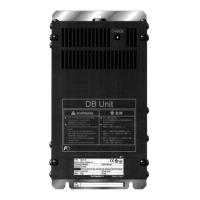4.7 Performance Comparison for Drive Controls (Summary)
Each drive control has advantages and disadvantages. Table 4.7-1 compares the different drive controls, showing
their relative performance in each characteristic.
Select the one that shows high performance in the characteristics that are important in your machine. In rare cases,
the performance shown below may not be obtained due to various conditions including motor characteristics or
mechanical rigidity. The final performance should be determined by adjusting the speed control system or other
elements with the inverter being connected to the machine (load). If you have any questions, contact your Fuji
Electric representative.
Table 4.7-1
F42
*
data
Drive control
Output
frequency
stability
Speed
control
accuracy
Speed
control
response
Maximum
torque
Load
disturbance
Current
control
Torque
accuracy
0
V/f control with slip
compensation inactive
A ― ― A ― ― C
1
Vector control without speed
sensor (Dynamic torque vector)
C C C A C ― B
2
V/f control with slip
compensation active
C D D A C ― C
3 V/f Control with speed sensor C A B A C ― C
4
V/f Control with speed sensor
(with Auto Torque Boost)
C A B A C ― A
6
Vector Control with speed
sensor
C A A B A A A
15
Vector Control without speed
sensor and magnetic pole
position sensor
C A B B B A A
Relative performance symbols A: Excellent, B: Good, C: Effective, D: Less effective, ―: Not effective

